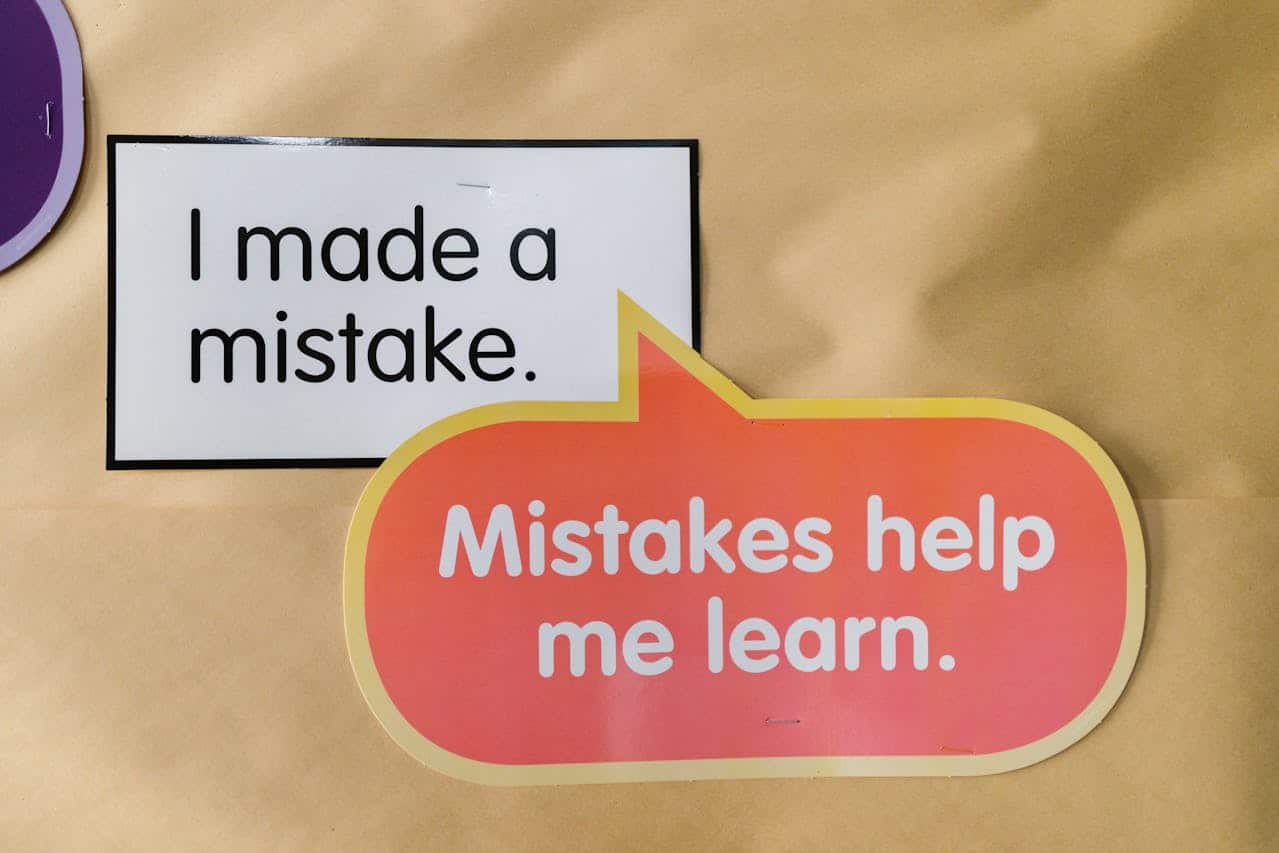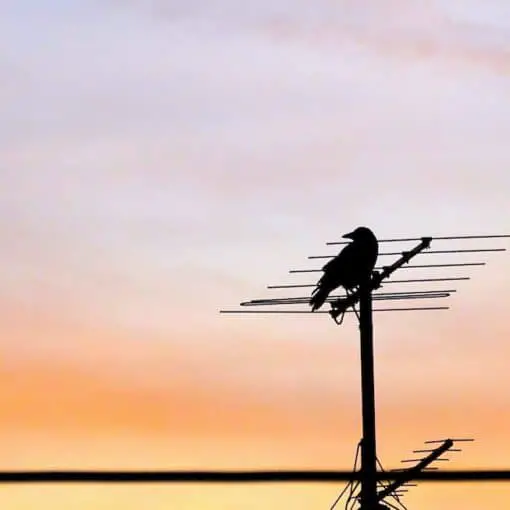Ham radio, also known as amateur radio, is an engaging and rewarding hobby that attracts enthusiasts from all walks of life. For those who are new to this world, the learning curve can seem steep. Getting acquainted with the equipment and protocols takes time, and it’s common for beginners to make mistakes along the way. Understanding these common pitfalls can help new operators avoid frustration and enjoy their new hobby more quickly.

This article aims to highlight the seven most frequent mistakes that new ham radio operators make and offer practical advice on how to steer clear of them. By recognizing these errors early on, beginners can develop better habits and improve their overall experience with ham radio.
1) Overloading Your Transmit Power

New ham radio operators often think that more transmit power will always result in better communication. This is not always true. Using too much power can cause problems such as interference with other devices and even damage your own equipment.
When you transmit at high power levels, you could overload the front-end circuitry of nearby receivers. This can lead to permanent damage to those radios. It’s similar to shining a bright flashlight directly into someone’s eyes—they get blinded temporarily or even permanently.
Transmitting at unnecessary high power also causes more interference on the frequency bands you’re using. This can affect other ham radio operators and can be particularly disruptive in populated areas. It’s better to use only the power you need to communicate effectively.
Ham radios usually have different power settings for a reason. It’s important to practice using the minimum required power for your transmission. For example, many experienced operators recommend starting low and increasing the power only if needed.
Additionally, many countries have regulations about the maximum power levels allowed for ham radios. Exceeding these limits can lead to fines or other penalties.
For more detailed tips and guidelines, you can check out more resources on common mistakes new ham radio operators make. It’s always better to be cautious and responsible with your transmit power.
2) Neglecting Antenna Tuning
Many new ham radio operators skip tuning their antennas. This can lead to poor signal quality and transmission issues. Using an SWR meter is crucial for proper tuning. It checks if the antenna is too long or short and helps adjust the antenna’s impedance.
Unstable SWR readings often indicate feedline or antenna problems. Addressing these issues can improve signal strength. Proper tuning ensures the best match between the transmitter and the antenna system.
Operators should use an antenna tuner to achieve optimal performance. This tool helps adjust the impedance matching, resulting in improved signal quality. Following best practices in using an antenna tuner is essential for any ham operator.
Skipping this step can lead to frustrations and ineffective communication. Taking the time to tune the antenna accurately can make a significant difference in performance.
New operators often ignore this process, but with the right tools and techniques, tuning becomes straightforward. Using equipment like an SWR meter and antenna tuner, operators can ensure their systems work efficiently. This practice is vital for clear and reliable transmissions.
3) Ignoring Local Frequency Regulations
New ham radio operators sometimes overlook local frequency regulations. This can lead to problems with authorities and other radio users.
Each country has its own rules for frequency use. Ignoring these can result in fines or losing your license. Familiarize yourself with your country’s regulations.
Operators must also adhere to designated frequency bands. Using frequencies outside these bands can interfere with other services. This can include emergency services, which could have serious consequences.
Checking the FCC rules and regulations is crucial for operators in the United States. Staying informed about updates and changes will help avoid unintentional violations.
In addition, joining local ham radio clubs can provide insights. Experienced members can offer guidance on following these regulations correctly.
4) Using Incorrect Phonetic Alphabet
Many new ham radio operators make the mistake of using the wrong phonetic alphabet. This can create confusion and lead to communication errors.
The standard phonetic alphabet is the NATO phonetic alphabet, which has specific words assigned to each letter. For example, “A” is “Alfa,” and “J” is “Juliett.”
Using non-standard phonetic alphabets, like those from the Air Force or Fire Department, can confuse other operators. It is important to stick to the standard to ensure clear communication.
Some common errors include using “Juliet” instead of “Juliett” or “Alpha” instead of “Alfa.” Even small spelling changes can matter.
It’s also helpful to practice using the phonetic alphabet. This way, it becomes second nature during communication.
Refer to resources such as NATO phonetic alphabet guides to familiarize yourself with the correct terms.
Consistency is key to effective communication in ham radio. By using the correct phonetic alphabet, operators can avoid misunderstandings and ensure messages are received clearly.
5) Failing to Identify Properly
New ham radio operators often forget to identify themselves correctly during transmissions. This mistake can lead to misunderstandings and may violate regulations.
Operators are required to give their call sign at the beginning and end of a communication. They should also do so every ten minutes during a conversation.
Proper identification helps other operators know who they are communicating with. It adds accountability and ensures that the communication is logged correctly.
Many new hams mistakenly think they don’t need to identify themselves if the conversation is short. This is not true. Even brief communications require proper identification.
Operators should also use their full call sign, not just part of it. Partial identification can create confusion and is not compliant with regulations.
Another common error is using an outdated or incorrect call sign. Ensuring that the call sign is current and accurate is essential for proper identification. If the call sign has changed, update it on all platforms and radios used.
By consistently identifying themselves properly, operators can avoid these pitfalls and enjoy smoother communications. Proper identification shows professionalism and respect for the ham radio community.
6) Improperly Setting the Microphone Gain
One common mistake new ham radio operators make is improperly setting the microphone gain. Correct mic gain settings are crucial for clear communication.
Mic gain controls the audio level sent to the transmitter. When set too high, it can cause distortion and splatter, which affects signal quality.
To properly set the mic gain, operators should use the ALC (Automatic Level Control) meter. This ensures the signal is within the optimal range. Jim W6LG demonstrates this process using the Icom IC-7300
Too much mic gain also leads to “splatter,” where signals spread beyond the intended bandwidth. This can interfere with other communications and is generally frowned upon in the ham radio community. Proper gain settings help maintain clean and clear transmissions.
Compression settings should also be checked. Too much compression, combined with high mic gain, results in a distorted signal. Regularly monitor and adjust these settings to avoid issues.
Revisiting mic gain settings and understanding radio manuals can significantly improve communication quality. Effective mic gain management plays a vital role in ensuring reliable and clear transmissions.
7) Using Poor Quality Cables
Using poor quality cables can lead to a range of problems for ham radio operators. Cheap cables often lack adequate shielding, leading to signal loss and interference. This affects the overall performance of the radio, making communication less reliable.
In some cases, low-quality cables can even cause damage to equipment. They may have poor connectors or inadequate insulation, which could result in short circuits or other technical issues.
Good quality cables, like the commonly used RG-8 with 50 ohms impedance, ensure better signal integrity and longevity. Investing in well-made coaxial cables can make a significant difference in maintaining a clear and stable connection.
Proper cable management is also crucial. Keeping cables organized and ensuring they are not kinked or tangled helps maintain their integrity. Clear identification of cables can prevent confusion and potential damage.
Choosing the right type of cable for specific needs, such as the RG-58 for higher frequency ranges, can enhance performance. Ham radio enthusiasts should prioritize quality and suitability when selecting cables to avoid unnecessary problems.
Poor cable choices might cause various issues, but using the right cables ensures better performance and durability in ham radio setups. For more detailed information, you can check out this guide on mastering cable management for ham radio stations.
Understanding Ham Radio Licensing
Ham radio licensing is a critical step for any new operator. This involves choosing the right license class and preparing effectively for the exam to get started on the right foot.
Different License Classes
In the United States, there are three main license classes for ham radio operators: Technician, General, and Amateur Extra. Each class grants different privileges on radio frequencies.
Technician License: This is the entry-level license, accessible to most beginners. It requires passing a 35-question exam covering basic radio theory, regulations, and operating practices. This license allows access to all amateur radio frequencies above 30 megahertz.
General License: This next level requires passing an additional 35-question exam. It includes more comprehensive knowledge of radio theory, regulations, and practices. It allows operators to use additional frequencies, providing more communication options.
Amateur Extra License: This is the highest level, requiring a 50-question exam. It covers advanced topics and grants the most extensive frequency privileges, allowing operators to use all available amateur bands.
Exam Preparation Tips
Proper preparation can significantly boost the chances of passing the ham radio exams. Here are some tips:
- Study Guides: Utilize published study guides, like the ARRL Ham Radio License Manual. These resources break down complex topics into manageable sections.
- Practice Tests: Take online practice tests to familiarize yourself with the exam format and question types. Websites like Ham Radio School offer valuable practice materials.
- Local Clubs: Join a local ham radio club. Experienced members can provide mentorship and advice.
- Scheduling: Schedule regular study sessions. Consistency is key to retaining the information needed to pass the exams.
By understanding the different license classes and adopting effective study practices, new operators can successfully navigate the licensing process.
Basic Operating Procedures
Adhering to proper operating procedures is crucial for maintaining clear and respectful communication on ham radio. This involves practicing common courtesy and using Q-codes correctly.
Common Courtesy on Air
Respect and politeness are important when communicating via ham radio. Operators should always identify themselves at the start and end of conversations. This makes it clear who is speaking and maintains transparency.
Listening before transmitting is crucial. It ensures that the frequency is not already in use, preventing interruptions. If the frequency is busy, choose another one to avoid causing disruption.
Using plain language helps prevent misunderstandings. Avoid slang or jargon that might confuse other operators. Speaking clearly and at a moderate speed also enhances comprehension.
Using Q-Codes Properly
Q-codes are standardized codes used in ham radio to convey information quickly and efficiently. They are typically three-letter combinations, starting with ‘Q’. For instance, “QRM” stands for interference from other stations.
Correct use of Q-codes during conversations ensures smooth communication. Operators should familiarize themselves with common Q-codes and their meanings. Using them in the right context avoids confusion.
When using Q-codes, it is essential to use them accurately and consistently. Misuse or overuse of these codes can lead to misunderstandings. Keep a list of Q-codes handy until they are memorized.
Importance of Antenna Selection
Selecting the right antenna is crucial for ham radio operators. A good antenna maximizes signal strength and minimizes interference, ensuring clear communication.
Choosing the Right Antenna for Your Needs
Not all antennas are the same. Some antennas focus on long-distance communication while others are better for local transmissions.
- Dipole Antennas are ideal for beginners. They are simple to set up and work well for general use.
- Vertical Antennas radiate signals in all directions. This makes them great for local coverage.
- Yagi Antennas are more complex but provide strong, focused signals. They are best for targeting specific areas.
Considering factors like frequency, location, and purpose will help in making the best choice. For detailed information, explore this guide to antennas for amateur radio.
Setting Up Your Antenna Correctly
Proper installation is key to getting the best performance from your antenna.
- Height Matters: The higher the antenna, the better the signal. Elevate it to reduce obstructions.
- Grounding: Always ground your antenna to prevent static buildup and lightning damage.
- Orientation: Ensure it is correctly aligned. This is especially vital for directional antennas like Yagis.
Common mistakes include poor placement and incorrect alignment, leading to weak signals. Learn from these mistakes by watching a video on common mistakes to avoid when installing ham radio antennas.
Correct setup will enhance your ham radio experience, ensuring clear and strong communication lines.
Frequently Asked Questions
Setting up a ham radio station and operating it without causing interference requires careful planning and understanding of basic etiquette and safety. Being part of a ham radio community can provide valuable support and learning opportunities.
What are the key considerations for setting up my first ham radio station?
First, ensure you have a good location for your station. You need a space with proper ventilation and accessibility.
Next, choose a reliable power source. Unstable power can damage your equipment.
Finally, select the right antenna. A well-tuned antenna is crucial for clear communication.
How can I prevent interference with other electronics when operating ham radio?
To avoid interference, first use a properly shielded coaxial cable. This helps contain the signal within the cable.
Also, maintain a safe distance between your antenna and other electronics.
Check your grounding system too. Proper grounding minimizes unwanted noise and interference.
What is the best way to join and benefit from ham radio communities?
Joining a local ham radio club can provide hands-on experience and mentorship.
You can also participate in online communities and forums. Many forums offer valuable advice and support from experienced operators.
Hamfests and conventions are great places to meet fellow radio enthusiasts.
Can you explain the basic etiquette for communicating on ham radio frequencies?
When talking on ham radio, always identify yourself with your call sign at the beginning and end of each transmission.
Listen before speaking to ensure the frequency is clear.
Use the correct phonetic alphabet for clarity. Clear communication is essential.
What steps should I take to maintain my ham radio equipment?
Regularly inspect your equipment for wear and tear. Check cables and connectors to ensure they are in good condition.
Clean your equipment to prevent dust buildup.
Store your radio gear in a dry, cool place to avoid damage from moisture and heat.
How important is it to have a thorough understanding of radio frequency safety?
Understanding RF safety is crucial. Overexposure to radiofrequency can be harmful.
Make sure to follow guidelines for safe distances from antennas.
Use lower power settings whenever possible, and always stay informed about safety regulations.





